LM79 and LM80 Differences Explained
Time:2015-09-02 Views:3928 Compile:SUNPER
LM-79 explained
IES LM-79 has been approved by the IESNA. This is the abbreviation of the Illuminating Engineering Society of the North America. It was approved because it achieved the lighting energy efficiency standards required by this body. This is the main test for the optical performance testing. However, some of test items are required in order to complete the aid distributed photometer which manufacturers are not able to afford and thus they cannot do a full report. Generally, this test is for the entire lamp manufacturers. The main test items include the following.
The distribution efficiency of the total luminous flux intensity is correlated to the color temperature commonly abbreviated as CCT. It is also correlated to the color rendering index CRI, voltage input AC or DC current input power, DC or AC input voltage frequency power factor as well as chromaticity coordinates. Typically, the testing of LM79 can be completed within just one week. All you are required to do is to provide two samples and the cost involves in the entire process of testing is relatively cheap as compared to other methods.
LM-80 explained
The IES LM-80 is maintenance of lumens in order to increase the LED life as required by the standards. The main test in LM80 is to maintain the rate of light output. This is the life test of the LED light source. It is crucial noting that the luminous flux basically refers to the surface light source that radiates the light energy which can be human visual perception. The calculation result is presented by lumen or lm. The LM80 test items include the following.
The first LM80 test item is the light output followed by the color coordinates prison. There are three points that need to be measured. The temperature should be 55 degrees and 85 degrees respectively. The customers can also specify the temperature point they want, each 20 to 60 samples. The LM80 test needs 6,000 hours and about nine months which is a bit expensive. In order to apply for Energy Star, the LM80 reports should provide light source. However, with the LM80 data, you do not have to do lumen maintenance but you it should be tested so as to be verified.
The three general IES light distribution curve test include polar coordinate, Cartesian coordinate method as well as isocandela curve. This refers to the light source or lamps in the light intensity distribution space and in all directions.
More Posts:
■ The Color Rendering Index CRI
100W LED High Bay replace 250W Metal Halide
Next:Comparisons between HPS and LED hibay performance
User comments
Your current input 0 characters(Reply for at least 6 characters)。
Online Services

Mobile: +86 18938902515 (Mr.Allen)
Tel:+86 755 23159099
Fax:+86 755 61673151
E-mail: sales@sunper.net
zip code: 518108













